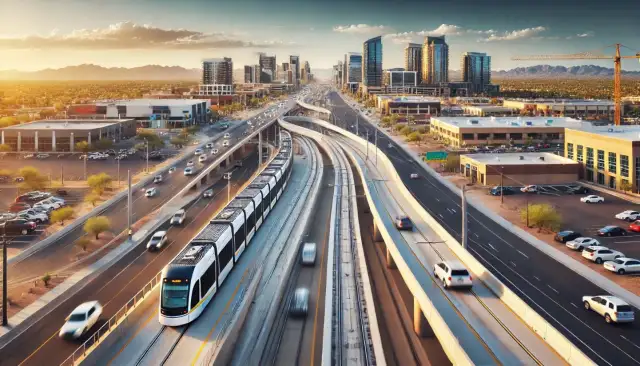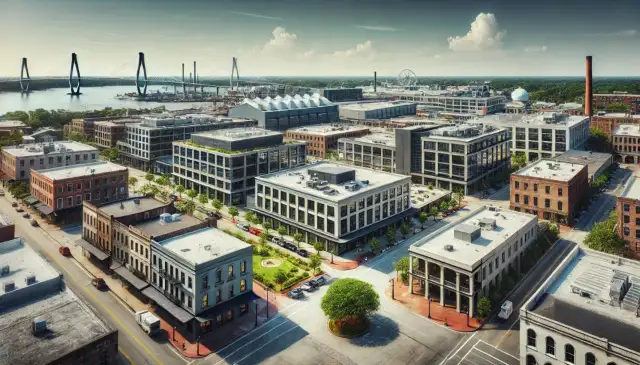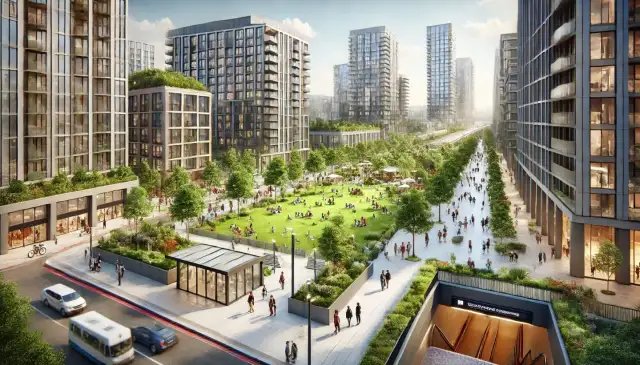Transportation Infrastructure Impact on Property Values: A Comprehensive Analysis
The development of transportation infrastructure is a game-changer in the real estate market. Whether it’s the construction of a new highway, the expansion of public transit, or the addition of bike-friendly pathways, the transportation infrastructure impact on property values is undeniable.
Proximity to quality transportation can increase property desirability, boost local economies, and create opportunities for real estate investments. Conversely, poorly planned infrastructure or heavy traffic zones can negatively affect property appeal. This article explores how transportation infrastructure influences property values, helping homeowners, buyers, and investors understand its far-reaching implications.
Why People Search for Transportation Infrastructure Impact
What Drives Interest in the Topic?
People researching transportation infrastructure's impact on property values generally fall into these categories:
-
Informational Intent:
- Learning about the relationship between transportation and property values.
- Common searches: “How do highways affect property value?” or “Impact of metro systems on real estate.”
-
Navigational Intent:
- Finding tools or platforms for real estate analysis related to transportation infrastructure.
- Common searches: “Real estate map with public transit info” or “Transportation and property value reports.”
-
Transactional Intent:
- Users ready to buy, sell, or invest based on transportation trends.
- Common searches: “Homes near new train stations for sale” or “Buy property in transit-oriented developments.”
-
Commercial Intent:
- Analyzing transportation infrastructure as a factor in long-term investment planning.
- Common searches: “Best cities for infrastructure-led real estate investments” or “Highways boosting property values.”
Understanding these intents allows content and strategies to address specific needs effectively.
Key Ways Transportation Infrastructure Impacts Property Values
Increased Accessibility Equals Higher Demand
- Public Transit Expansion: Properties near metro lines, train stations, or bus routes see a significant increase in value due to enhanced connectivity.
- Highway Development: New highways reduce travel time, boosting the appeal of suburban and rural properties.
For example, properties within a half-mile of public transit stations often command a 20-30% higher price premium compared to those further away.
Effects of Congestion and Noise
- Traffic Volume: While highways improve access, excessive traffic and noise can deter buyers and reduce property values.
- Mitigation Solutions: Sound barriers and green buffers are often used to balance accessibility with livability.
Creation of Transit-Oriented Developments (TODs)
Transit-oriented developments, which combine residential, commercial, and recreational spaces near transit hubs, are growing in popularity.
- Benefits of TODs: Increased walkability, reduced dependence on cars, and higher property values.
- Examples: Areas around Washington, D.C.’s Metro or San Francisco’s BART stations have seen transformative growth.
Factors Influencing the Degree of Impact
Type of Infrastructure
- Highways and Freeways: Boost suburban property values but can lower appeal in urban areas due to noise and pollution.
- Public Transit: Enhances urban and suburban areas, especially in cities with efficient systems.
- Cycling and Pedestrian-Friendly Infrastructure: Promotes sustainable living, increasing demand in eco-conscious markets.
Local Economic Growth
Infrastructure often sparks economic development by attracting businesses and improving job opportunities, indirectly boosting property demand and values.
Timeline and Public Perception
- Early Stages: Property values may dip during construction due to disruption.
- Post-Completion: Once completed, infrastructure improvements typically lead to value appreciation.
Practical Tips for Homeowners and Investors
For Homebuyers
- Research Future Projects: Identify planned infrastructure projects that could boost your property's future value.
- Prioritize Proximity: Look for properties within a 10-15 minute walk to transit hubs.
For Real Estate Investors
- Focus on TODs: Transit-oriented developments often yield higher returns.
- Monitor Market Trends: Stay informed about regions undergoing transportation upgrades.
For Policymakers and Developers
- Engage Communities: Involve local residents in the planning process to address concerns about traffic, noise, and accessibility.
- Balance Development: Combine transportation improvements with green spaces and urban amenities.
Insights from Notable Projects
The Impact of London’s Crossrail
London’s Crossrail project, also known as the Elizabeth Line, boosted property values along its route by up to 30%, particularly in previously underdeveloped areas.
Suburban Growth in Texas
In Texas, the development of new highways like SH 130 has expanded suburban markets, with properties near exits experiencing value increases of up to 25%.
Conclusion: Transportation Infrastructure’s Role in Real Estate
The transportation infrastructure impact on property values highlights the interconnectedness of mobility and real estate markets. By enhancing accessibility, reducing commute times, and stimulating economic growth, well-planned infrastructure projects can significantly boost property values.
However, understanding the type, location, and execution of these projects is crucial for homeowners and investors alike. Whether you’re planning your next property purchase or analyzing long-term investment opportunities, consider transportation infrastructure as a key factor in your decision-making process.
Have insights or questions about this topic? Share your thoughts in the comments below and help others understand the transformative power of transportation on real estate. Don’t forget to share this article on social media to spread the word!






